It was stunning photos like this that brought us to Pamukkale, which literally means “cotton castle” in Turkish.
Terraces of Pamukkale
This giant white terraced hill has been built up bit by bit since early times made from a mineral deposit called travertine which is deposited from the ever-flowing hot spring. At the top lies the ancient ruins of Hierapolis, a city founded in the 2nd century BC.
The closest city to the site is Denizli. From there, it is a 20 minute (free) shuttle ride to the tourist village of Pamukkale where the streets are packed full of hotels, restaurants, souvenir shops, tourist agents, and little else. We were there in the cool off-season. An important fact that I’ll refer to in just a minute. For now, just keep in mind that the ambient temperature was about 5°C during the hot part of the day, and a bit cooler at night.
From our hotel in Denizli, it was a quick walk to the entrance gate where we paid 30 Lira each, ($15 CAD). The entrance is more or less at the base of the terraces, and the only way up is to walk. It’s not really a steep walk, but is still difficult for one reason. You have to do it barefoot (to protect the UNESCO site).
Despite it’s fluffy snowy complexion, this deposited travertine is anything but soft. It’s hard and prickly. Not sharp enough to cut open our well-callused hiking feet, but sharp enough to cause some pain and discomfort. In truth though, the surface wasn’t really that bad to walk on. The cold was.
Not Exactly Smooth; Hard as Rock
Looks Cold Doesn’t It?
Remember how I said that the ambient temperature was just a handful of degrees above freezing? The water flowing around our feet was just a little bit colder than that by the time it reached the bottom. It was kind of a mixed blessing – on one hand, it served to numb the pain from the sharp textured surface. On the other, it was cool enough that we had to do double time up the hill for fear of losing a toe or two to near-frostbite. Fortunately, once we hit about the halfway point, the true colours of the hot spring started to show through and the water began to warm.
Starting to Warm Up?
That was the terraces. After climbing them, there really wasn’t much to do but snap a few photos. We were not allowed to swim in any of the terraced pools, like the photos we’d seen in the travel agencies. I’m not sure if they are permanently closed, or if it’s just for off season restoration. Instead, there was an indoor pool filled with hot spring water. But it too was off-limits, unless you were willing to pay an additional 40 lira! ($20 CAD!) for the privilege of swimming, which incidentally nobody was. For once we didn’t feel like the only cheapskates around!
Hierapolis
That brings us to the ruins on the top. To say the least, they were impressive. It’s a large site, with a lot of buildings, roads, and a sewer system. There was also a large necropolis with the largest collection of Lycian sarcophagi that we saw in any one place. It’s probably best showcased with a few photos.
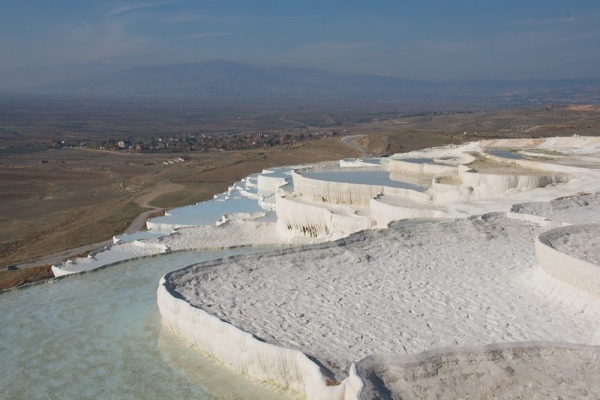
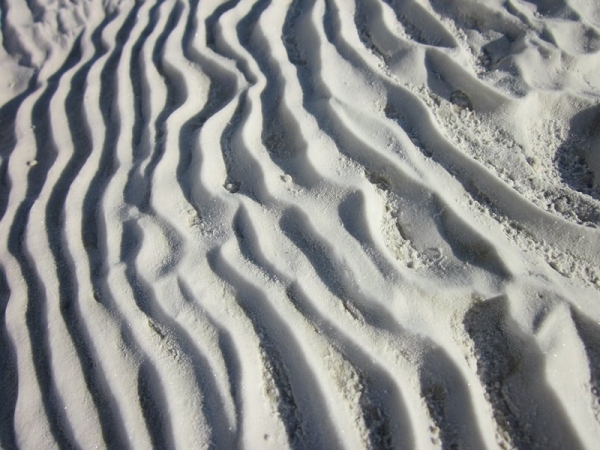
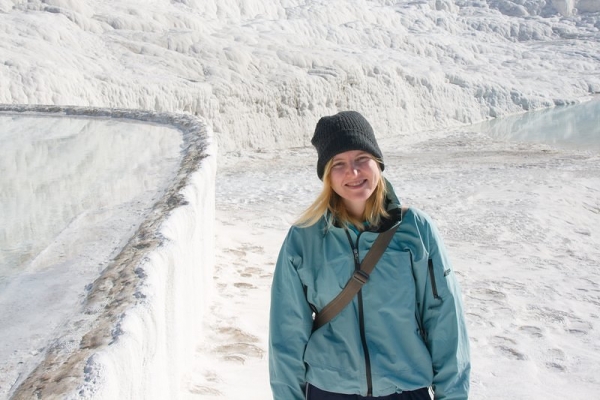
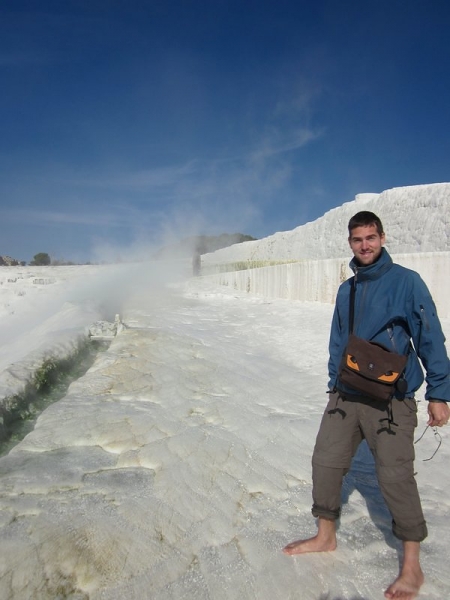
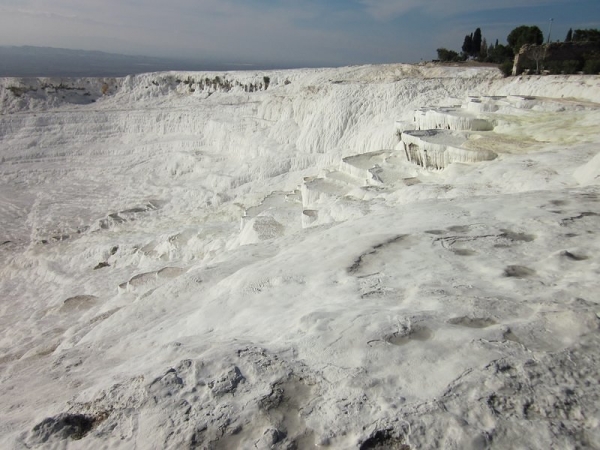
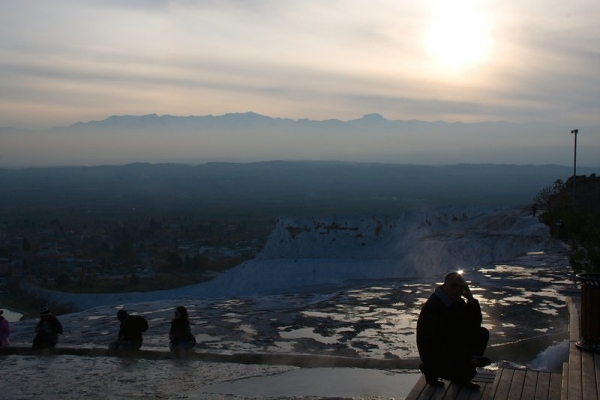
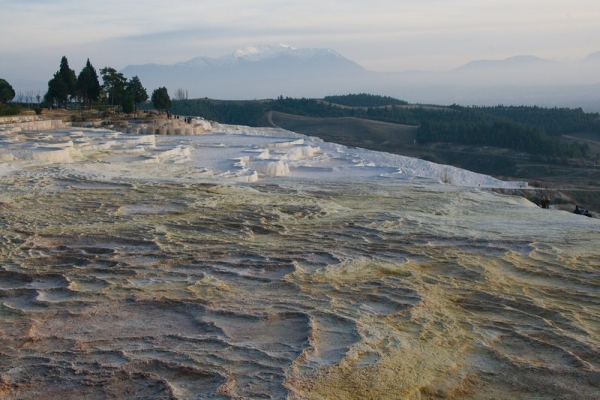
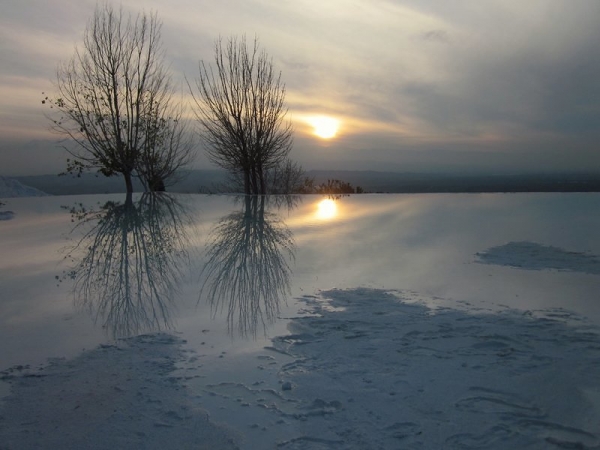
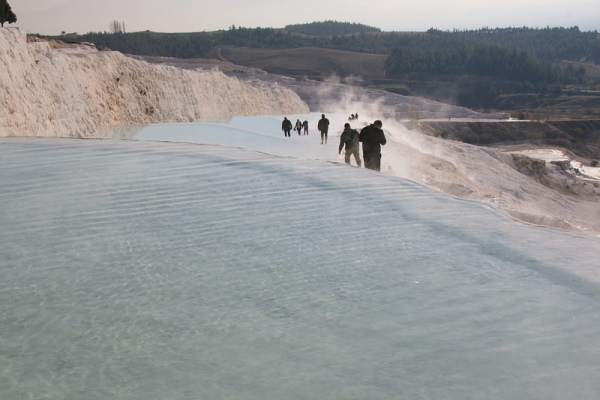
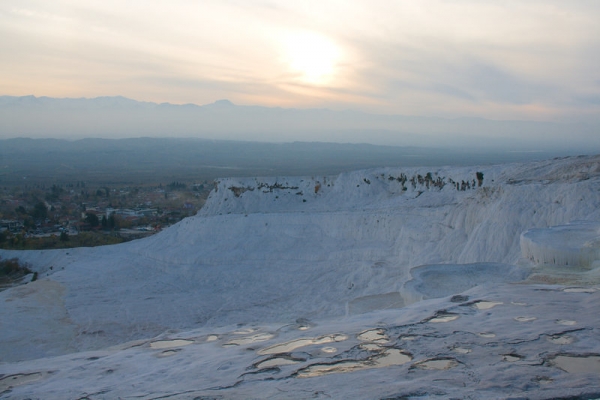
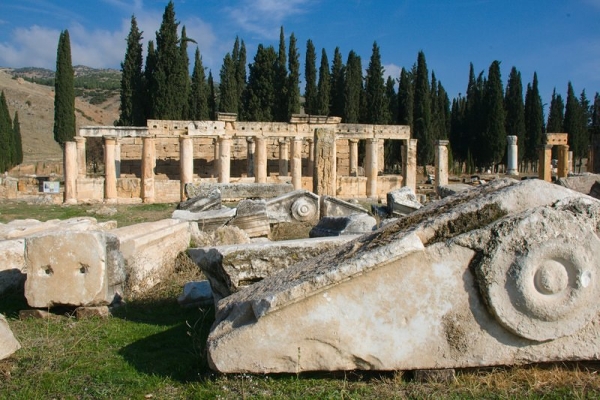
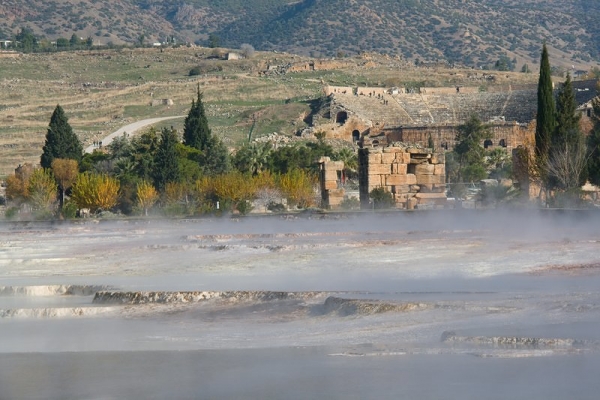
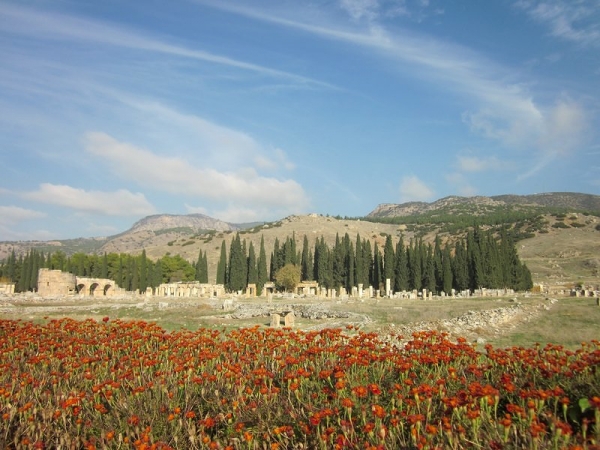
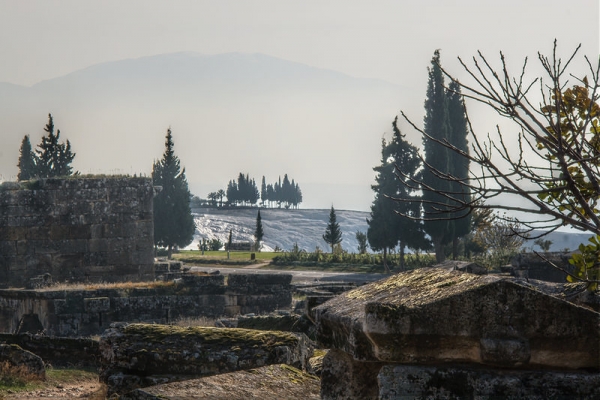
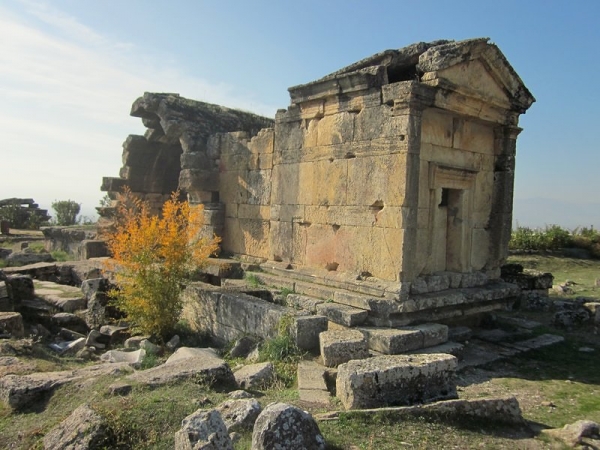
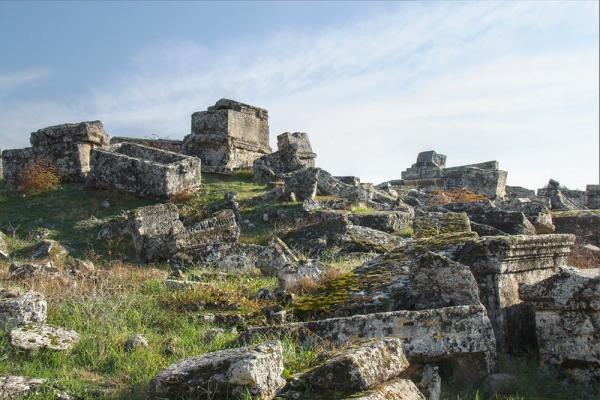
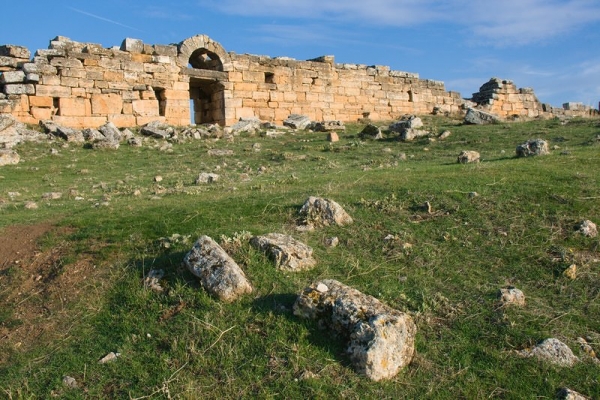
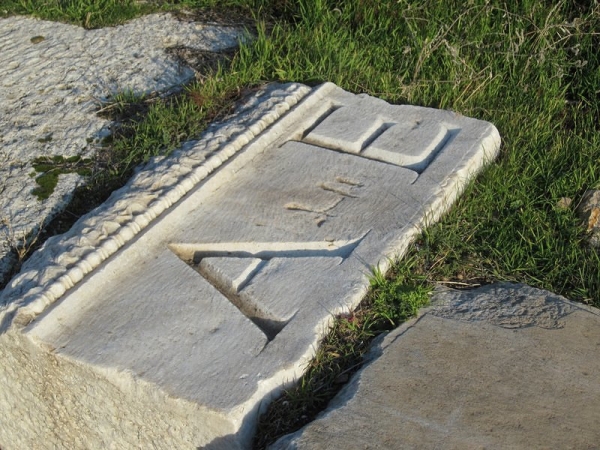
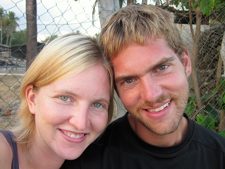



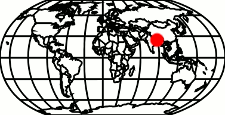
Thank you for sharing great photos! To answer your question, terraced pools are closed because walking on them actually hurts the formation and whiteness of travertines. However you can take a quick swim in pools at the top of the terraces. 🙂
That makes sense. Thank you.